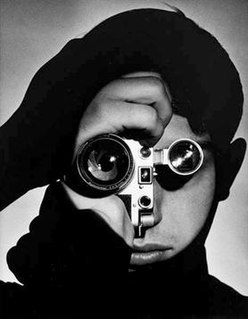Top 26 Quotes & Sayings by Andreas Feininger
Explore popular quotes and sayings by an American photographer Andreas Feininger.
Last updated on December 22, 2024.
Once a photographer is convinced that the camera can lie and that, strictly speaking, the vast majority of photographs are camera lies, inasmuch as they tell only part of a story or tell it in distorted form, half the battle is won. Once he has conceded that photography is not a naturalistic medium of rendition and that striving for naturalism in a photograph is futile, he can turn his attention to using a camera to make more effective pictures.
A photographer who does not know how to translate his feelings and ideas into a graphically satisfactory form is bound to produce ineffective photographs, no matter how idealistic, compassionate, sensitive or imaginative he may be. For in order to be considered good, a photograph must not only say something worthwhile, it must say it well.
The camera can push the new medium to its limits - and beyond. It is there - in the "beyond" - that the imaginative photographer will compete with the imaginative painter. Painting must return to the natural world from time to time for renewal of the artistic vision. The key sector of renewal of vision today is the new vistas revealed by science. Here photography, which is not only art but science also, stands on the firmest ground.




















